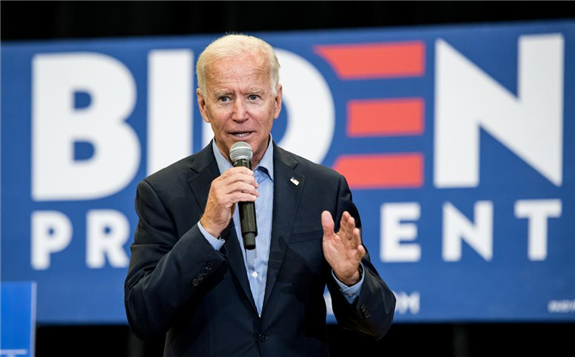With electric vehicles making up just 2% of U.S. auto sales in 2020, achieving a rapid “energy transition” to an all-electric vehicle fleet in the coming 15 years will be a huge endeavor, one that President Joe Biden and his fellow Democrats in congress are determined to aggressively push forward. To do so, the administration plans to attack the task from two directions: First, by spending hundreds of billions in increased incentives and subsidies for automakers and the development of new charging station infrastructure; second, by imposing new regulations that would dramatically raise the cost of gasoline and the internal combustion cars that use it.

In a November post-election trip to Detroit, then-President-elect Biden told an audience that he has big plans to increase the incentives for EVs already in place at the federal level. Following Biden’s lead last week, Senate Majority Leader Chuck Schumer described his own plans for EV incentivization in a new infrastructure bill that congressional Democrats plan to move soon.
“It’s a bold new plan designed to accelerate America’s transition to all electric vehicles on the road, to developing a charging infrastructure, and to grow American jobs through clean manufacturing,” Schumer told The Verge in a brief interview this week. “And the ultimate goal is to have every car manufactured in America be electric by 2030, and every car on the road be clean by 2040.”
As reported by The Verge, Schumer’s plans include raising the current EV tax credit of $7,500 per car, direct incentives to automakers who phase out their internal combustion fleets, tax incentives for property owners who install their own in-home charging equipment, and direct subsidies for local governments to expand their public charging infrastructure. Finally, Sen. Schumer proposes to spend $45 billion in grants to upgrade the nation’s charging infrastructure and target $17 billion to subsidize the retro-fitting of automaker facilities to handle EV production.
Schumer’s estimate for the total price tag for all of this subsidization at the federal level? $454 billion over ten years, which honestly seems like a very conservative estimate.
The actions the administration plans to take on the side of raising the price for internal combustion cars include traditional methods like increasing controls on tailpipe emissions, which barely exist in new models these days, and by raising the fleet gas mileage standards imposed on automakers. Requirements like these have over the last 40 years already helped to increase the cost of gas-powered cars to the point at which auto finance companies now offer long-term loans that resemble a home mortgage just to get the things off their lots. Yet, despite all of that, the internal combustion cars remain significantly less expensive than similar-class EVs. Thus, the imposition of further restrictions is in part motivated by the desire to help even out those price tags.
But the administration also plans to impose more subtle measures behind the scenes whose impact on the prices for cars and gasoline will be very real but difficult for consumers to pinpoint as the cause of the sticker shock to come. One such measure is the result of an action President Biden himself already took in the form of an executive order issued in late February ordering his regulatory agencies to raise the standard Social Cost of Carbon (SCC) estimate from $7 per ton of emissions by more than 700%, to $51 per ton.
As David Kreutzer of the Institute for Energy Research (IER) recently wrote, the principle here is simple: The higher the estimate for SCC goes, the more strenuous and impactful regulatory actions can be justified. A carbon tax of $51 per ton would equate to an increase in gasoline prices of ~45 cents per gallon, adding $500 per year to the average American household’s gasoline bill. Emissions regulations imposed using the same price tag for the social cost of carbon will likely produce a similar result.
If one assumes a consumer plans to keep a car for the life of a typical loan, say, 6 years, that adds $3,000 to the cost of owning a gas-powered car. Or, As Joe Daniel, an energy analyst for the Union of Concerned Scientists told the Wall Street Journal recently, “For EVs to take off, they need to be as convenient as gas-powered cars—that’s the whole point of this big purchase.”
Obviously, the massive increase in SCC assumption, once baked into the regulatory cake, will also raise the cost of all other forms of energy as the new regulations are put into place, including the cost of the electricity consumed to charge the EVs. But American consumers have been successfully conditioned to somehow assume that the charging of their car is “free.”
After all, they can just pull into one of those very convenient spaces right at the front of the parking lot at their local Whole Foods Market WFM 0.0% and set their Tesla TSLA -4.8% or Chevy Bolt to charging while they go inside to shop. When they come out a half-hour later, there’s no bill to be paid - not directly, anyway - no slot in the pump to insert a credit card, no digital readout of the price per gallon (or watt) to compare to what the price was the last time they filled up.
Given that so many Americans haven’t the slightest idea of where electricity comes from or how it is generated (hint: mainly by the burning of fossil fuels), there is simply no connection made between the cost of the EV and the cost of the power needed to charge it. Thus, it becomes “free,” at least in the minds of many consumers.
From a policy standpoint, the Biden/congressional Democrat plans to put the pedal to the metal on the transition to EVs appears quite clever in its multi-pronged approach. But woe be to them all if the American public were to wake up one day and make the costly connection between the policies and their pocketbooks.
This article is reproduced at www.forbes.com